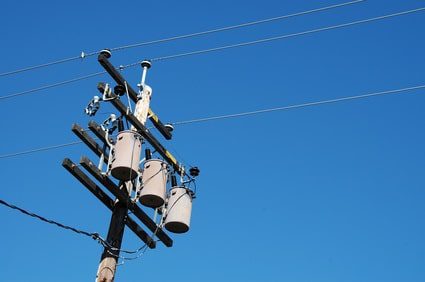We flick on a light switch, plug in our chargers, or scroll through social media – these seemingly mundane actions rely heavily on a network of infrastructure often taken for granted: utility poles. These towering structures line our streets and roads, silently delivering the power and communication that fuel our modern lives. But ever wondered, who owns the utility pole on your property?
This blog dives deep into the world of utility pole ownership, exploring its significance, helping you identify ownership, and outlining the rights and responsibilities associated with these essential structures.
The Silent Giants: Why Utility Poles Matter
Utility poles are the backbone of our electrical grid, telephone networks, and even cable internet. They carry the wires that deliver electricity to our homes, power our appliances, and keep us connected to the world.
Here’s a breakdown of their significance:
- Essential Infrastructure: Ohne (without) utility poles, our modern way of life would grind to a halt. Imagine a world with no lights, no internet, and limited communication – that’s the reality without these silent giants.
- Safety First: Utility companies prioritize maintaining poles in safe working order. Regular inspections and proper maintenance ensure they remain sturdy and don’t pose a danger to people or property.
- Efficiency and Reliability: The infrastructure supported by these poles allows for efficient delivery of electricity, phone signals, and internet connections.
Unveiling the Mystery: Identifying Utility Pole Ownership
While a utility pole may stand tall on your property, it likely belongs to someone else. Here’s how to find out who owns the pole in your yard:
- Deeds and Closing Documents: Your property deeds or closing documents might mention easements granted to utility companies for placing poles on your land. Easements are legal agreements that allow specific use of your property by another party.
- Municipal Magic: Local municipalities often maintain detailed records of utility infrastructure within their jurisdiction. A quick phone call or visit to their website might shed light on the ownership of the pole in question.
- Utility Company Communication: Contacting the utility companies themselves (power company, phone company, etc.) is another effective way to determine ownership. They can usually confirm ownership based on the location of the pole.
Remember: It’s always best to err on the side of caution. If you’re unsure who owns the pole, treat it as belonging to a utility company and avoid any contact with it.
Rights and Responsibilities: A Balancing Act
Ownership of a utility pole comes with a set of rights and responsibilities:
Rights of the Utility Company (Owner):
- Access for Maintenance and Repairs: The owner has the right to access the pole for maintenance, repairs, or upgrades as needed. This might involve trimming surrounding trees or replacing damaged equipment.
- Safety Measures: To ensure public safety, the owner has the right to trim or remove trees that pose a danger to the pole or its lines.
- Upgrades and Replacements: The owner can make necessary upgrades or replacements to the pole as technology evolves or the pole reaches the end of its lifespan.
Responsibilities of the Utility Company (Owner):
- Maintaining Safe Working Order: The owner is responsible for ensuring the pole is in safe working order through regular inspections and preventative maintenance.
- Addressing Dangers: The owner is responsible for addressing any dangers posed by the pole, such as cracks, loose wires, or leaning structures.
- Restoration After Work: Any damage caused by the owner’s work on the pole (e.g., digging) must be restored to its original condition.
What About You (The Property Owner):
- Generally No Ownership Rights: While the pole resides on your property, you most likely don’t own it. However, you might have some restrictions on planting trees or building structures near the pole due to easement agreements.
- Respecting the Infrastructure: Avoid tampering with the pole or its lines. Treat it as a live electrical hazard and maintain a safe distance.
- Reporting Issues: If you notice any damage, cracks, or leaning on the pole, contact the utility company immediately for repairs.
When Teamwork Makes the Dream Work: Joint Ownership
In some instances, multiple utility companies might share ownership of a single pole. This doesn’t change the overall process of identifying ownership or determining who’s responsible for maintenance. Each company will have access rights for their respective equipment on the pole.
Conclusion: Knowing is Power (Literally!)
Understanding utility pole ownership clarifies who maintains these structures and who to contact in case of issues. It also helps you appreciate the silent heroes that keep our daily lives powered and connected. Remember, even though the pole may be on your property, you most likely don’t own it. However, by working together with the utility
FAQs
- Who owns the utility pole on my property?
Check your property deeds, contact your local municipality, or reach out to the utility companies themselves.
- How to find out who owns a utility pole?
Use the methods mentioned above.
- Power pole on private property?
The pole itself might be owned by the utility company, even though it resides on your property.
- Residential utility pole?
The ownership principles apply to poles in residential areas as well.
- Who is responsible for replacing a utility pole?
The owner of the pole, usually the utility company, is responsible for replacement.
- Who owns telephone poles?
Similar to power poles, telephone poles are most likely owned by the telephone company.
- Who is responsible for the telephone line from pole to house?
The line from the pole to your house is typically the responsibility of the homeowner.
- Who is responsible for replacing a utility pole?
The owner of the pole, typically the utility company, is responsible for replacement.
